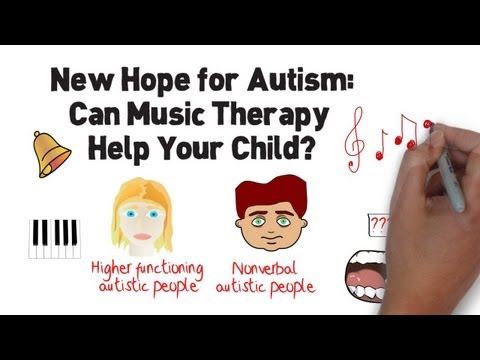
I constantly find myself wondering what “caused” my son’s brain to work the way it does or trying new methods for regulating or erasing some of his unwanted behaviors. I don’t expect music therapy to be a cure because I don’t believe a cure exists. However, I can put him in environments where he shines, where his strengths take precedence over his faults. Given his affinity for music, I’m eager and excited to begin music therapy and to watch him blossom in ways we cannot yet imagine. Like many other children on the spectrum, my son exhibits some unusual behaviors due to his difficulties with responding to his own environment, a place that may feel more uncertain to him than to others.
This back-and-forth music making offers an opportunity for children with ASD to practice a musical conversation of listening, planning, and executing (Carpente, 2014; Spiro & Himberg, 2016; Wimpory et al., 1995; Vaiouli et al., 2015). These turn-taking skills often generalize to other environments, helping them to develop the interactive capacities necessary for play (Baron-Cohen, 1987; Harril & Jones, 2009; Wigram & Gold, 2006; Wimpory et al., 1995). Collaboration with healthcare professionals is crucial for the successful integration of music therapy into autism treatment.
Music therapy has often been linked to positive outcomes and progress in skill development for individuals diagnosed with autism spectrum disorders. Up to thirty percent of children with autism are non verbal and many low functioning children have difficulty in following verbal commands, and have difficult times with social awareness like body language. In this case music therapy can improve the mapping of sounds to actions, by connecting the auditory and motor sections of the brain, which may help improve understanding of verbal commands. By pairing music with actions and repetitive training, the brain pathways needed to speak can be reinforced and improved. Once you find a music therapist, the therapist will perform an evaluation to determine if music therapy is a good fit for your child as well as determine possible goals. The evaluation will be comprehensive and look at your child’s response to a variety of musical stimuli, including giving your child an opportunity to play with instruments or listen to a variety of music types. Music therapy is a type of therapy that uses activities like singing, playing instruments, and listening to music to help a child reach their specific goals.
Journal of Music Therapy
As this can often be helpful, we must also keep in mind that some children are easily overwhelmed by too much sensory input. Luckily, music is flexible and adaptable and can be easily changed to fit the needs of each child. Family-centered music therapy can help improve communication between children on the spectrum and their family members by teaching verbal and non-verbal communication skills. Besides, playing instruments or listening to music together promotes the feeling of closeness and understanding among family members. Music therapy is a form of therapy that uses music to address emotional, cognitive, and social needs of individuals.
How Music Therapy Can Tune the Autistic Brain
Examines ways of synthesizing music activities in accordance with these children’s neuropsychological characteristics as described in the research and clinical literature. Music therapy has also proved useful in reducing instances of noncommunicative speech patterns which can impede progress in learning functional language skills.
Read more about piano lessons for autism here. Through improvisation and composition, individuals with autism can develop their communication skills, emotional awareness, and self-confidence. These techniques encourage self-discovery and provide a safe space for individuals to experiment with different musical elements and ideas. By addressing sensory sensitivities through music therapy, individuals with autism can experience increased comfort, reduced anxiety, and improved focus in various environments.
Relatively little research has been conducted on the effects of MT on children with ASD and much of what has been published lacks scientific rigor. Fewer articles have been published in recent years, so selective publication can’t be ruled out. The major goal of this study was to investigate the overall effectiveness of MT for children with ASD across numerous outcomes and modifiers. Figure 1 shows the overall search strategy and article-screening procedure, whereas Table 2 shows the coded methodological, participant, and study features as well as the total treatment impact for each study. Parents who are interested in music therapy for their ASD child might have consulted many professionals before and may have tried other therapies with their child. This ensures that the therapy remains effective and allows adjustments to be made as the child grows. Music is a form of expression without words, making it particularly useful for non-verbal children and children with speech delays.
The systematic review was conducted according to the recommendations outlined in the PRISMA guidelines (16). Abstracts, editorials, and case series with only one evaluation were excluded.







